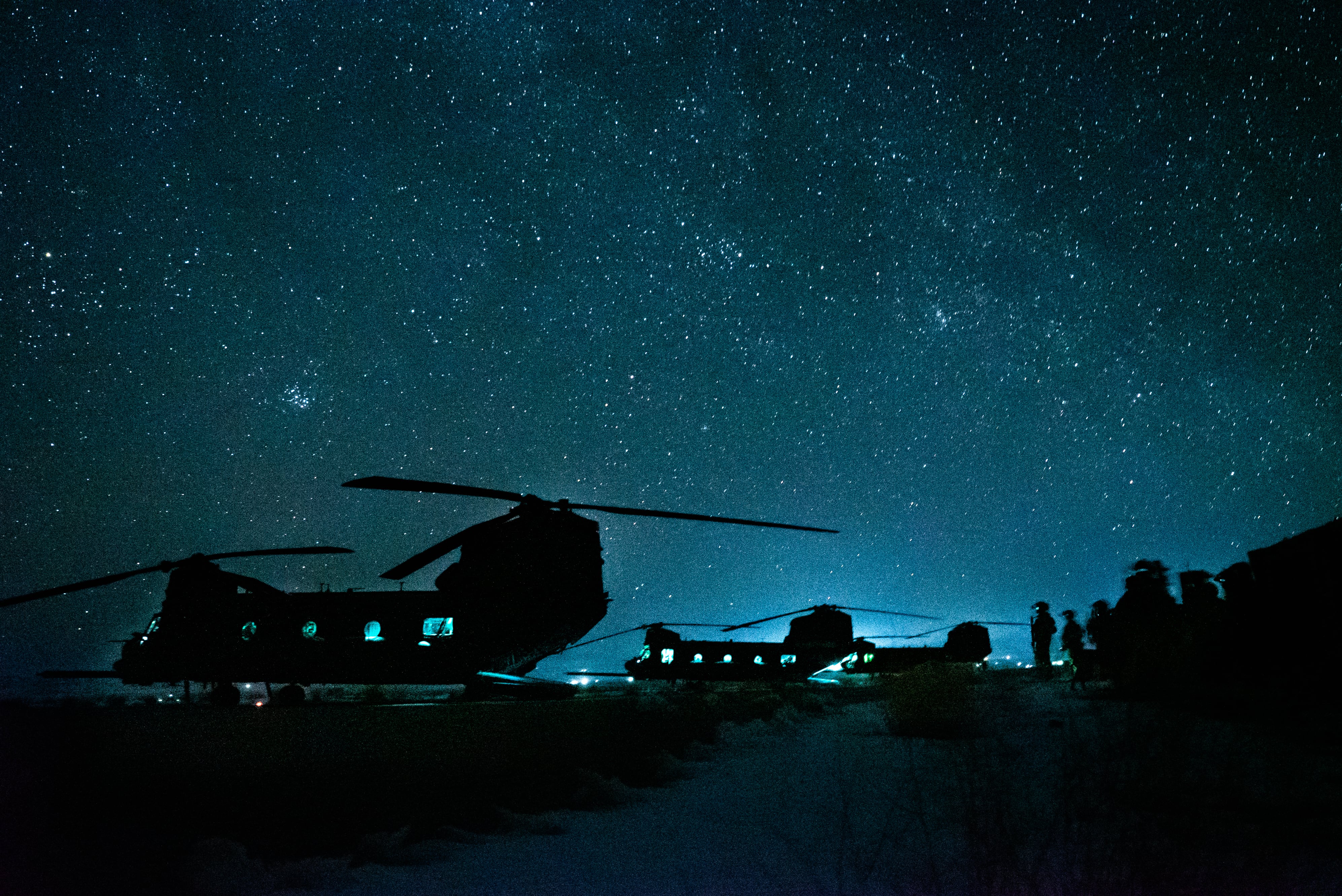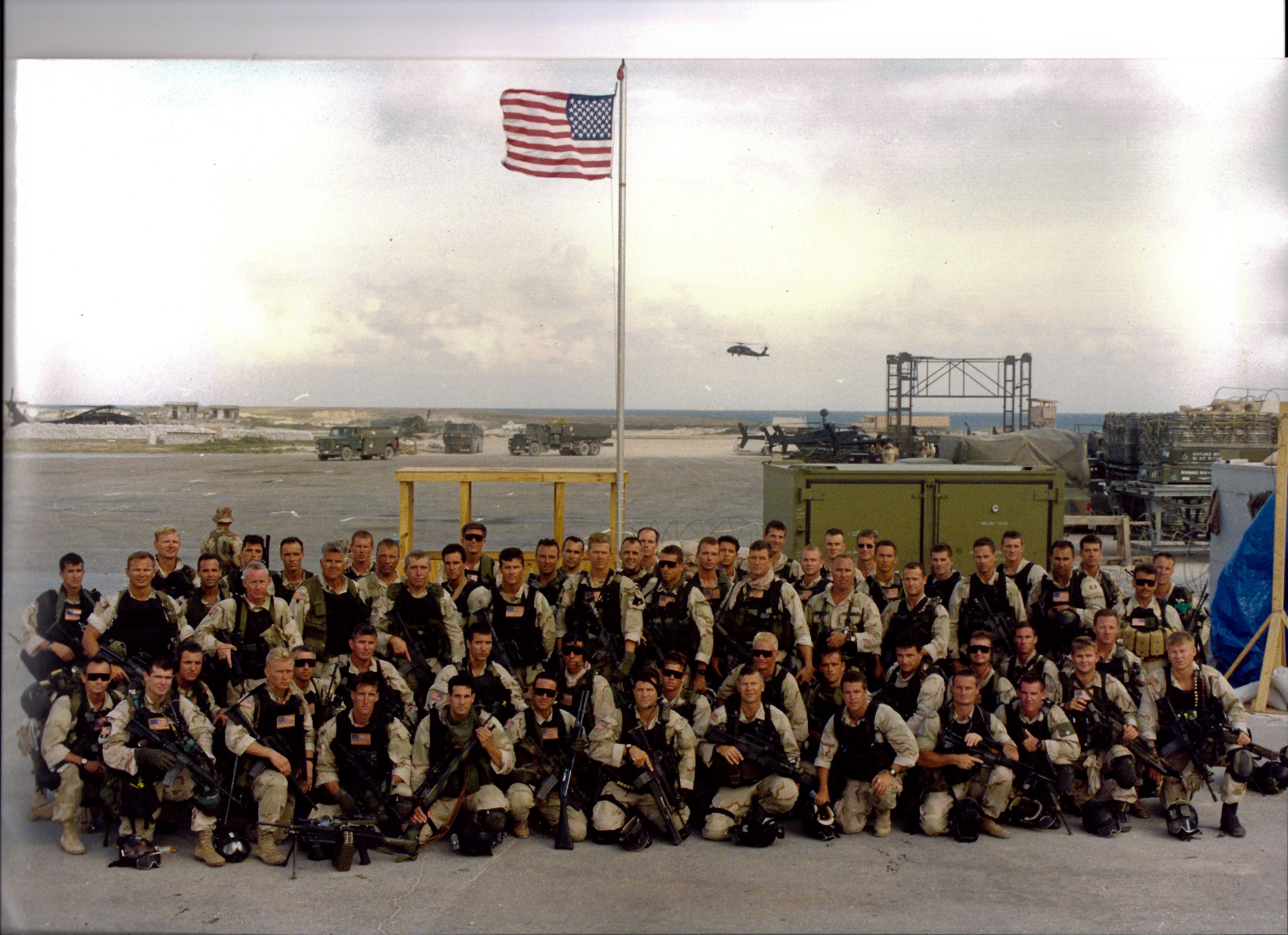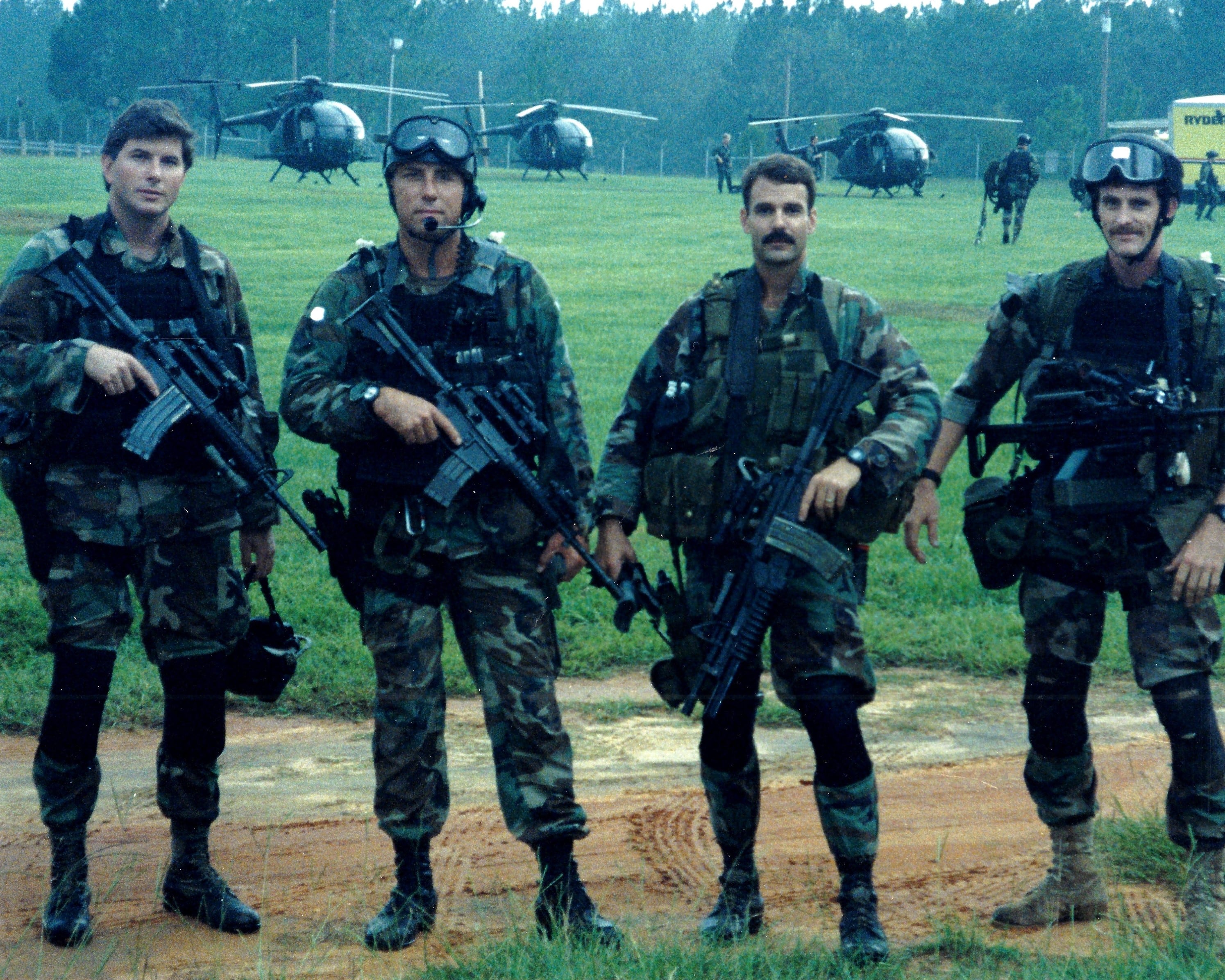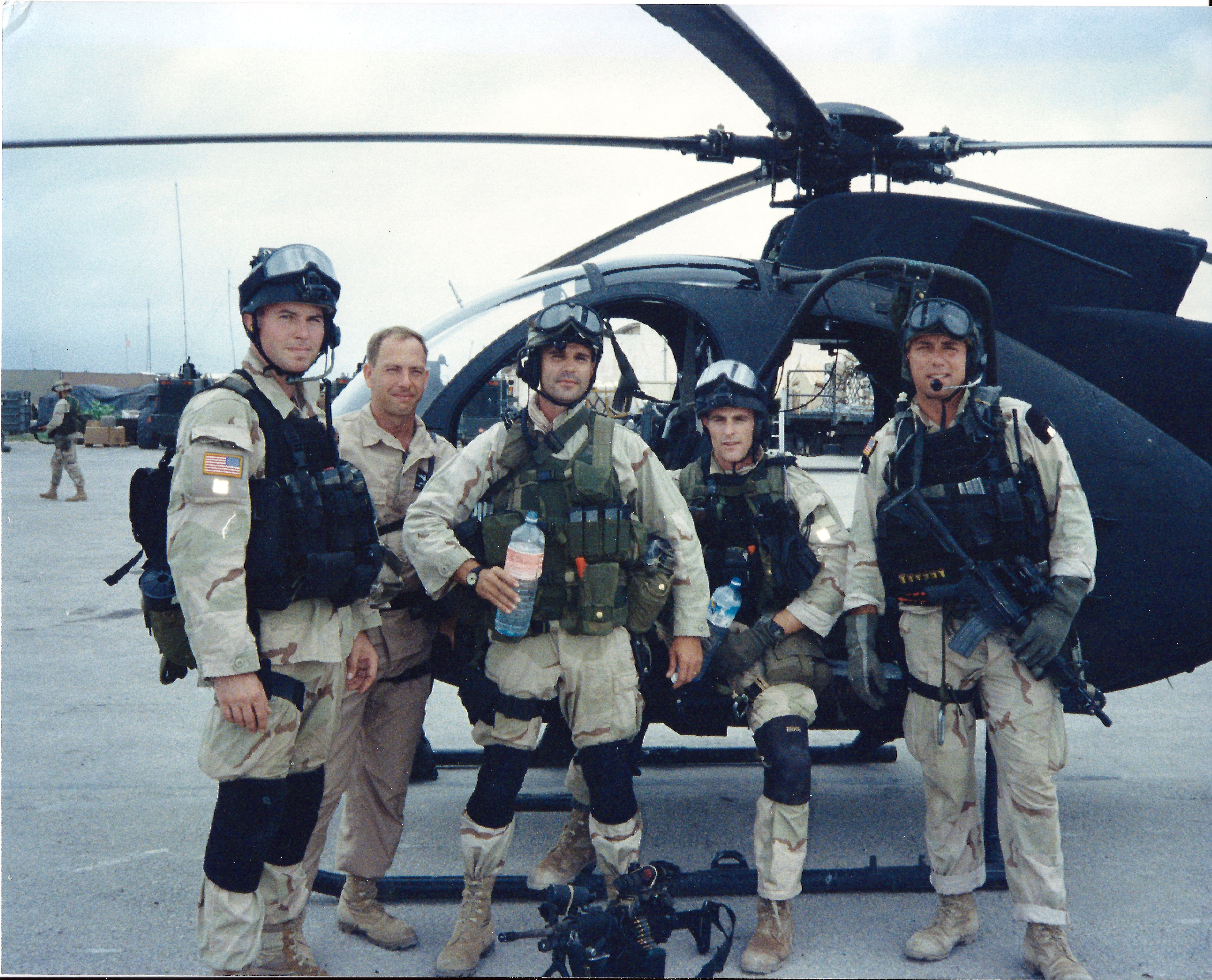Rangers and Delta Force operators faced an onslaught of gunfire as they approached the crashed Black Hawk helicopter on the afternoon of Oct. 3, 1993.
The soldiers dashed for cover along the streets of Mogadishu, Somalia, where they would spend the night securing the crash site.
In need of medicine and ammunition, another Black Hawk arrived, hovering low as aircrew kicked out cases of supplies. Helicopter door gunners opened up with 7.62mm miniguns, and were met with return fire from below.
“It was the first time I had ever heard miniguns being drowned out because there was so much ground fire from AKs up to that helicopter,” retired Command Sgt. Maj. Chris Faris, a Delta Force veteran, told Army Times. “That was the first time we realized how many people were actually around us.”
Faris, who went on to serve as the top enlisted soldier for the secretive Joint Special Operations Command, is among the 60 soldiers receiving new awards for the 1993 Battle of Mogadishu. The awards came after former Secretary of the Army Ryan McCarthy ordered a review of battlefield actions last fall.
Fifty-eight medals are being upgraded to Silver Stars and two will be upgraded to the Distinguished Flying Cross. Faris is expected to receive a Silver Star in an October ceremony at Fort Bragg, North Carolina.
U.S. special operations forces were sent on the fateful 1993 mission to snatch lieutenants of Somali warlord Mohamed Farrah Aidid at a residence in central Mogadishu.
The initial raid was successful, but the plan went awry when two Black Hawks were downed by rocket-propelled grenades.
RELATED

The ensuing gun battle lasted through the night and cost the lives 18 U.S. troops, with dozens more wounded. Estimates of Somali casualties ranged from a few hundred to more than 1,000, including civilians caught within the urban sprawl.
The political fallout triggered the resignation of a defense secretary and cast a shadow over military planning throughout the 1990s and the war in Afghanistan.
“What I saw over the course of my career was the continued implications of ‘Black Hawk Down,’ to include all the way up until we did the mission for [Osama bin Laden],” said Faris, who was still with JSOC during the raid on bin Laden’s compound in Abbottabad, Pakistan.
During debates over whether to approve the daring, and ultimately successful, cross-border operation in 2011, Faris recalled a cabinet official opposed to it saying, “We can’t afford another Black Hawk Down.”
No lucky shots
The RPGs that took those Black Hawks down during the deadly 1993 battle weren’t just lucky shots, Faris noted.
After a previous mission to capture Aidid’s financier, operators had warned against having the helicopters continue circling during raids.
Ostensibly, snipers aboard the aircraft provided over-watch. But in practice, the Black Hawks acted like a “big giant spotlight” drawing attention to U.S. activities, said Faris.

“They shot so many RPGs at the helicopter that day that, in fact, they’re lucky they didn’t get hit,” Faris said. “So we told our leaders to stop flying the freaking helicopters overhead. They’re going to get one shot down. And lo and behold, the next mission, that’s exactly what happened.”
Faris was on an MH-6 Little Bird helicopter that landed at the objective on the afternoon of Oct. 3, 1993.
The team quickly snagged Aidid’s lieutenants. Up to that point, they had taken some sporadic gunfire, but the only casualty was Ranger Pfc. Todd Blackburn, who fell from a helicopter’s fast-rope.
A ground convoy prepared to whisk away the targets, but things took a turn when the first Black Hawk was shot down. The Delta Force teams split up. One element returned to base with Aidid’s lieutenants and the other joined a Ranger platoon heading to secure the crash site.
“I would say the battle actually began as we got up to crash site one. That’s when all hell opened up,” Faris recalled. “It was a really good, concerted ambush. A lot of people went down right off the bat.”
“It was such intense and accurate fire that everybody just immediately, whether you were on the left side or right side of the road, began to clear the buildings that you were next to to take cover and regroup,” he added.

The Americans established a perimeter, with the forward edge at the crash site, and dug in for the night. The fighting was “on-again, off-again” as Somali militiamen probed the perimeter, Faris said.
Soldiers from the 10th Mountain Division and Malaysian Army arrived in the pre-dawn hours to relieve the embattled force.
The team loaded their wounded into the armored vehicles and began what has become known as the “Mogadishu Mile,” the famed movement by foot that Rangers and Delta Force took out of the city.
Shadow over policymakers
At the tactical level, the 1993 Battle of Mogadishu didn’t change too much, Farris said.
Soldiers did learn some hard lessons, like planning for the worst. Expecting to complete the mission before sunset, troops had left their night vision goggles behind. Those devices would’ve been useful during the night fighting that followed.
But the mission’s ramifications were far greater within the halls of government.
“The impacts I saw were much more at the operational and strategic level, the government policy levels, over the next 25 years. It never went away in those discussions,” Faris said.
Graphic footage of slain U.S. troops on Mogadishu’s streets shocked the public and loomed large over President Bill Clinton’s foreign policy, as well as plans to commit ground forces elsewhere in the world, including in Bosnia and during the Rwandan genocide.
The echoes of the Mogadishu mission continued through to Afghanistan, too.
“When I was the command sergeant major of JSOC with Admiral [William] McRaven, we were trying to get permission to go across the border into Pakistan to get after both the Taliban and Haqqani Network sanctuaries, and we went up to speak with a gentleman from the State Department,” recalled Faris.
“At one point — of course he didn’t know who I was or what my experiences were — he made the comment, ‘I had to go in with the ambassador to clean up your mess in Mogadishu,’ which really got on my nerves because we don’t deploy without the commander in chief telling us to go,” Faris added.
Former Secretary of Defense Les Aspin ultimately resigned amid the fallout from the 1993 Battle of Mogadishu. Aspin accepted blame for his role in denying requests by commanders in Somalia to send tanks and armored vehicles prior to the failed raid.
A Senate report also later faulted then-Chairman of the Joint Chiefs Gen. Colin Powell and his staff for rejecting a request to send AC-130 gunships.
“I think the one thing that it taught the policymakers was: When we sit here and we say, ‘Hey I want an AC-130 and here’s why,’ then don’t deny us the AC-130,” Faris said. “If you’re going to send us in to do something, then let us plan it. ... You either approve it or you don’t approve it and we’ll go from there.”
Kyle Rempfer was an editor and reporter who has covered combat operations, criminal cases, foreign military assistance and training accidents. Before entering journalism, Kyle served in U.S. Air Force Special Tactics and deployed in 2014 to Paktika Province, Afghanistan, and Baghdad, Iraq.




